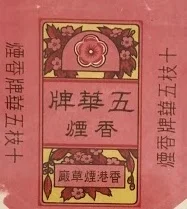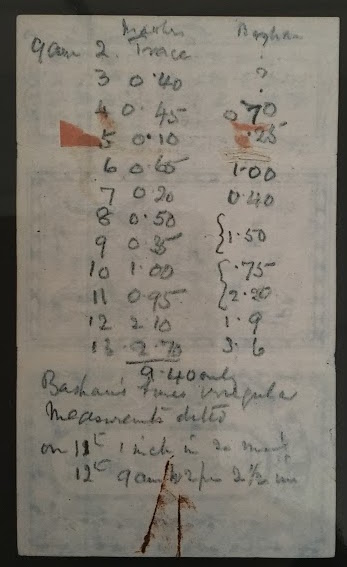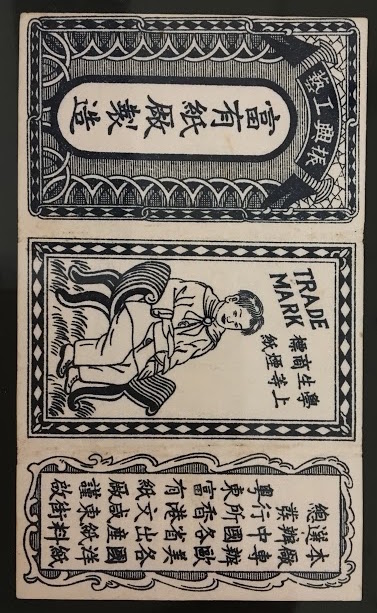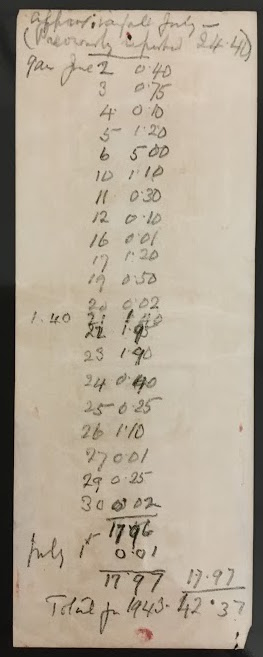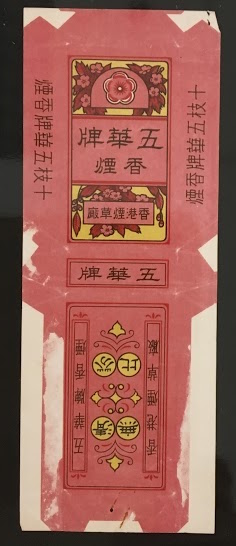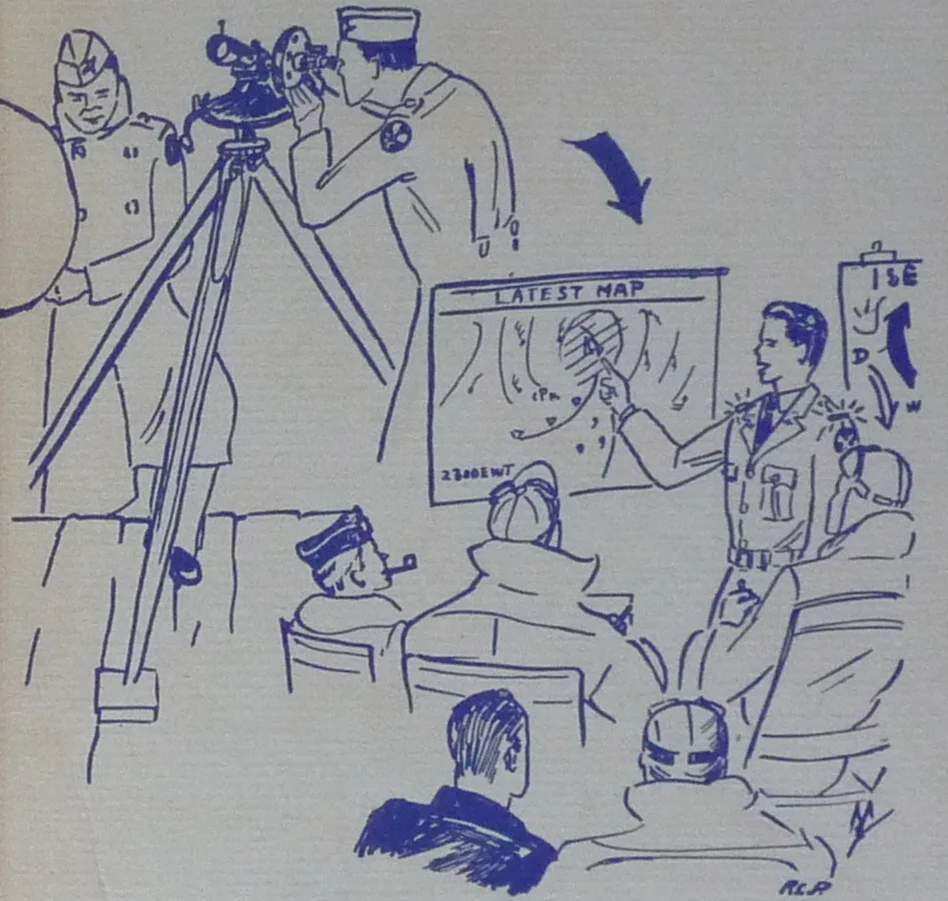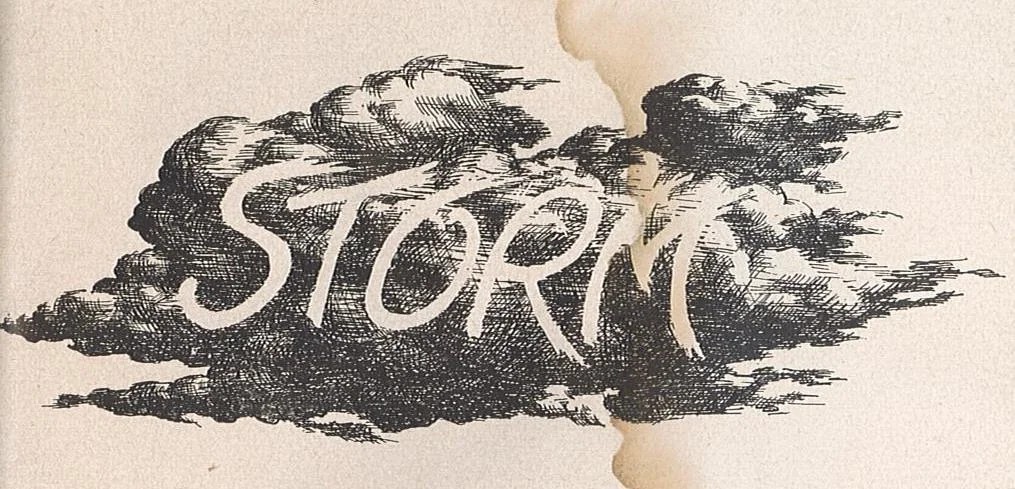POW Meteorology: Hong Kong, 1941-45
Gallery Caption: Some British prisoners of war recorded weather observations on whatever scraps of paper they could obtain. The black cigarette card displays daily precipitation observations for Hong Kong. The Red Cigarette wrapper reveals a monthly precipitation record for June, 1943, as well as a year to date total of 42.37 inches. Digital images by Fiona Clare Williamson of originals held in the Public Records Office, Hong Kong.
[This is a guest post by Fiona Clare Williamson, an historian and Research Fellow at the Asia Research Institute at the National University of Singapore. Many thanks to her for sharing these remarkable sources and story!]
On the morning of 8th December 1941, Assistant Meteorologists at the Hong Kong Observatory Graham Heywood and Leonard Starbuck received orders to dismantle the facility’s rural magnetic station. The aim was to prevent the equipment falling into the hands of raiding Japanese war parties. Armed with a picnic lunch, the two men set out cheerfully on their errand – it was after all a beautiful day – and nobody expected the Japanese anytime soon.
They were captured at 3pm. Seventeen days later, the British formally surrendered Hong Kong, and Hong Kong became part of Japan’s Co-Prosperity Sphere for the next three and a half years. The Observatory itself was occupied by the Japanese. The new occupants continued to make weather observations but the building became a military barracks, and meteorology took something of a back seat.
But meteorology remained important to the European Observatory staff scattered across the various civilian and POW internment camps. Director Benjamin Evans, working with two other prisoners, managed a remarkable feat. With almost no resources and a great deal of creativity, they kept a record of the weather throughout their internment. Making use of any scrap of paper that came their way, including cigarette cards or picture cards from biscuit tins, they kept daily rainfall, temperature and wind records. They even made some pressure and humidity observations, although there is next to no evidence as to how they managed this. After 1942, the records were quite consistent, possibly as conditions in the camps relaxed and internees were able to acquire more resources.
Amazingly, many of their cards and handwritten records survived the war. They can now be found in the Hong Kong Public Records Office. A number have been published in Ho Pui-yin’s book, Weathering the Storm, on pages 222-227.
Evans took formal retirement in 1946. After six months recuperation in England, Heywood returned to Hong Kong in his new position of Director of the Observatory.
[Fiona is working on a number of projects involving the history of meteorology in the China Seas region, as well as the history of climate, extreme weather and disasters in Singapore and Hong Kong. She works extensively on multi-disciplinary projects with meteorological services, exploring sources of historic weather records for enhancing climate models of the Anthropocene. See more of her work at the Disaster Governance Asia blog.]
Learn More
- G. C. Emerson, Hong Kong Internment, 1942-45: Life in the Japanese Civilian Camp at Stanley (Hong Kong University Press, 2008).
- Graham Heywood, It Won’t Be Long Now: the Diary of a Hong Kong Prisoner of War (Blacksmith Books, 2015).
- Ho Pui-yin, Weathering the Storm: Hong Kong Observatory and Social Development (Hong Kong University Press, 2003): 218-228.
Image Source
Cigarette cards in the record 'HKRS845-1-3 - Rainfall Report On "Ng Wah" Brand Of Cigarette Paper Box (10.5 Sheets): Public Records Office of the Government Records Service.
